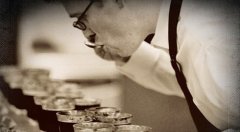History of Fine Coffee Culture Coffee Culture in Colombia

About 100 years ago, Colombian coffee was unknown to the world. The reason is that the superior geographical conditions for producing high-quality coffee have become obstacles in production and commercial activities. Coffee grown in the foothills must be picked manually. So today we can see the image of Wadi on a Colombian coffee bag dressed in traditional Colombian costumes and riding a donkey. In addition, we can also see the most obvious volcanic pattern on the bag, which reminds us that Wadiqin needs to pick coffee on a donkey. because coffee trees are planted on stepped highlands in the foothills of the Andes, with high elevations above 1500 meters, volcanic soil, frost-free climate, and high-quality Arabica bourbon coffee. All these factors make Colombian coffee synonymous with "quality Arabica". As a result, the coffee produced here is directly sold in the world under the name of the country and is invincible.
Colombia is by far the largest exporter of Arabica coffee, with almost no Robst in its territory. At the same time, it is also the largest producer of washed coffee beans in the world, and almost all coffee beans are treated with "expensive" washing.
In 1914, a railway was built to transport coffee beans deep into the mountains of Colombia, but because of the complex terrain in some places, it had to rely on the donkeys of Wadi. In addition, before the opening of the Panama Canal in 1914, Colombian coffee was mainly transported along the port of Madalina to the Atlantic Ocean. With the opening of the Panama Canal, Colombia became the only country in South America that could export coffee beans through Pacific and Atlantic ports, reducing transportation costs.
Since the 1950s, Colombian coffee has become a popular coffee in Europe and the United States, while sales of Brazilian beans, which have occupied the American market for many years, have been declining despite their low prices. This is because Colombian highland coffee has a better flavor and is very popular, so it is easy to get a good price.
The only regret is that in recent years Colombians have begun to replace their traditional Arabica with a new variety of Arabica, which has higher yield and stronger disease resistance than the latter. Although both belong to small-grain coffee, it is absolutely a terrible thing for people who are used to traditional Colombian taste, and it is bound to affect people's preference for Colombian coffee.
Important Notice :
前街咖啡 FrontStreet Coffee has moved to new addredd:
FrontStreet Coffee Address: 315,Donghua East Road,GuangZhou
Tel:020 38364473
- Prev

Coffee Culture History Coffee Culture in America
It was only natural that the coffee-house tradition should spread from London to America. The early coffee houses in America were modeled after London's coffee houses, though they were more formal. Like Lloyd's in London, coffee shops in America are great places to do business and spread information. There are even conference rooms for trials, auctions and dissemination of transactions.
- Next

The former coffee kingdom of Brazil
In the 1660s, the South American continent was still in a natural silence, and the aborigines lived a happy and heavenly life in this rich and fertile land. Brazil, which covers an area of more than 3 million square kilometers, occupies a major part of South America. In 1727, Pachta, a Portuguese officer, seduced the wife of the Governor of French Guiana into introducing coffee to Brazil with coffee seeds.
Related
- How did the Salvadoran coffee industry develop in Central America?
- What exactly does the golden cup extraction of coffee mean?
- The Origin of Coffee flower
- [2023 Starbucks World Earth Day] there are more meaningful things besides free Starbucks coffee!
- What kind of coffee is there in Spain? 9 Flavors of Spanish Coffee
- Aromatic African coffee| Kenya's coffee culture and historical production area
- Liberica Coffee Bean knowledge: the characteristics of Liberian Coffee beans of the three original species of Coffee beans
- The origin and formula of Spanish latte introduces the taste characteristics of Bombon coffee in Valencia, Spain.
- How to adjust the solution of over-extracted coffee
- What is the tasting period of coffee beans? What is the period of coffee and beans? How should coffee wake up and raise beans?

